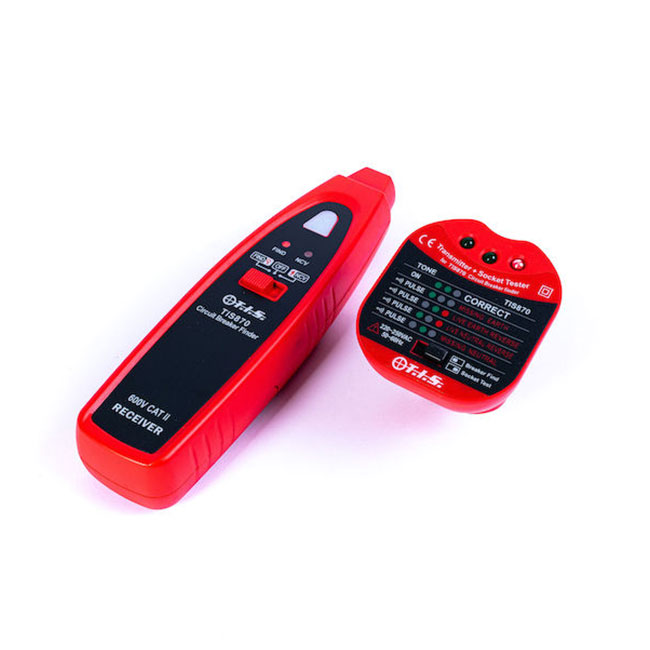A common problem for professional electricians is finding the correct circuit breaker or fuse for an outlet or a light fixture. This can involve an element of trial and error as you switch off different circuit breakers & fuses attempting to locate the right one. So a circuit breaker finder is a very simple tool which makes this process much quicker.
The circuit breaker & fuse finder is a tool which is used when servicing an outlet or light fitting, and particularly if the circuit breaker or fuse panel isn’t labelled or isn’t mapped out correctly. The circuit breaker finder enables the user to quickly locate the correct circuit breaker for the circuit the tool is connected to, thus allowing the user to safely shut off the area that they need to work on.
In general, therefore, the use of a circuit breaker finder makes the task of matching circuit breakers with wiring circuits much easier, and makes the task of isolating them and making them safe much easier also.
PLEASE NOTE THAT BEFORE WORKING ON ANY ELECTRICAL CIRCUIT YOU MUST FOLLOW THE CORRECT ELECTRICAL SAFE ISOLATION TESTING PROCEDURE
Who would use a circuit breaker finder?
It is important to note that a circuit breaker finder should not be confused with a circuit breaker tracer. A tracer can be used on de-energised circuits to help map out how a property is wired, while a circuit breaker finder is typically only used on energised circuits.
A professional electrician would use a circuit breaker finder to identify a particular circuit breaker they need to work on. The circuit breaker finder locates the circuit breaker controlling a specific outlet or set of outlets.
What does a circuit breaker finder look like?
A circuit breaker finder is a small and very simple tool which comes in two main parts:
- Transmitter – the transmitter plugs into the outlet (such as a regular household socket) of the circuit for which you are trying to identify the controlling circuit breaker. The transmitter doesn’t require a battery because it draws a live power from the line it is connected to. It only requires around 6-10 amps in order to send an electronic signal to the receiver.
- Receiver – the receiver is a handheld device that is paired to the transmitter and is used at the circuit breaker panel. The receiver is passed over all the circuit breakers in the panel and it will flash or beep repeatedly when it passes over the circuit breaker which is carrying the electronic signal sent by the transmitter it is paired to. The receiver does not need to be very sensitive because there is not much gain required given the relatively short distance between the tool and the parts of the circuit breaker which are carrying current. This will only be a couple of inches in most cases.
There are typically two types of circuit breaker finder commonly used:
- Manual – a manual circuit breaker finder is ideal for professional electricians because it allows the user to fine-tune the sensitivity of the signal from the circuit breakers, in situations where this might be needed.
- Automatic – an automatic circuit breaker finder automatically sets the sensitivity of the signal to an optimum level. This will prevent false positives being picked up from other circuit breakers, which could confuse a less experienced electrical tester.
- One of the most popular & reliable automatic circuit breaker & fuse finders on the market is the TIS 870, which also includes a no-contact voltage detector, socket polarity tester & flash light as part of the kit.
Video Demonstration
Find out more about the TIS 870 (digital circuit breaker finder & socket) in our video below:
Please note that this section is for information purposes only. Anyone using equipment referred to in this section must be suitably qualified and/or experienced within the respective field. If in doubt before use, please consult a qualified electrician or engineer & thoroughly read all instruction booklets.